Luxury consignment e-tailer The RealReal to enter the unicorn club with new funding
The RealReal, an online retailer for authenticated luxury consignment, has authorized the sale of up to $70 million in new shares, per a Delaware stock authorization filing discovered by the Prime Unicorn Index. If the company raises the entire amount, it would reach a valuation of $1.06 billion, cementing its status as the newest e-commerce unicorn.
The filing doesn’t guarantee The RealReal will sell the full amount of authorized shares. The company declined to comment on its fundraising plans.
The RealReal is led by founder and chief executive officer Julie Wainwright (pictured), the former CEO of Pets.com, a company now synonymous with the dot-com bust. It has raised quite a bit of capital to date — a total of $288 million from venture capital and private equity backers, including Great Hill Partners, Sandbridge Capital, PWP Growth Equity, Industry Ventures, Greycroft Partners and Canaan Partners. Most recently, The RealReal closed a Series G financing of $115 million in July 2018 that valued the business at $745 million, per PitchBook.
The RealReal has recently expanded its brick-and-mortar footprint and added additional e-commerce fulfillment centers as demand increased for its supply of second-hand luxury items. Founded in 2011, the company operates eight luxury consignment offices, where customers can receive free valuations of their luxury items. The RealReal is headquartered in San Francisco.
In a conversation with TechCrunch in 2017, Wainwright confirmed the company’s intent to go public at some point. With this upcoming round, The RealReal would be well placed for a 2020 initial public offering.
“That’s the goal,” Wainwright said during the interview. “We really aren’t in the mood to sell the business, we’re in the mood to go public at some point in the future.”
The RealReal competes with fellow second-hand e-tailers ThredUp and Poshmark . The latter is gearing up for a fall IPO, according to The Wall Street Journal. The online marketplace has tapped Morgan Stanley and Goldman Sachs to lead its offering after closing in on $150 million in revenue in 2018. ThredUp, another major player in the fashion retail market, hasn’t raised capital since 2015, but did begin opening physical stores in 2017 as part of its greater effort to compete with fellow venture-backed second-hand e-tailers.
The RealReal would also be the latest in a series of high-profile female-founded companies to gain unicorn status. Glossier tripled its valuation to $1.2 billion with a $100 million round earlier this year, followed by Rent the Runway, which attracted a $125 million investment at a $1 billion valuation, to name a few.
Powered by WPeMatico
Locus Robotics raises $26 million for warehouse automation
Warehouse automation is all the rage in robotics these days. No surprise then, that another emerging player just got a healthy slice of venture funding. Massachusetts-based Locus Robotics this week announced that it has secured a $26 million Series C. The round, led by Zebra Ventures and Scale Venture Partners, brings the startup’s total funding to around $66 million.
The five-year-old company produces robotic shelving designed to transfer bins inside of warehouses. Founder Bruce E. Welty was onstage at our robotics event back in 2017 demonstrating the technology.
It’s a similar principle to many other players in the space, including Amazon’s Kiva and Bay Area-based Fetch. And like those companies, Locus has garnered interest from some big players — most notably delivery giant, DHL.
The robotics automation space has heated up quite a bit in 2019. Colorado-based Canvas, which makes autonomous warehouse delivery carts, was acquired by Amazon last week. Even Boston Dynamics is looking at the category as a way forward for its own impressive technologies, putting its robot Handle to work in a fulfillment center.
“We have seen a massive uptick in demand for the flexible automation incorporated into Locus’s multi-bot solution, which is uniquely suited to address these challenges,” CEO Rick Faulk says in a release tied to the news. “Not only is our solution proven to dramatically improve productivity and drive down costs, but it is also a source of scalable labor that can be adapted to meet the demands of numerous product and customer profiles. This new funding will enable us to scale to meet growing demand for our revolutionary solution worldwide.”
Powered by WPeMatico
Tim Cook wants you to put down your iPhone
Tim Cook thinks people should get off their iPhones and decrease their engagement with apps. The Apple CEO, speaking at the TIME 100 Summit today, was discussing the addictive nature of our mobile devices and Apple’s role in the matter when he made these comments. He said the company hadn’t intended for people to be constantly using their iPhones, and noted he himself has silenced his push notifications in recent months.
“Apple never wanted to maximize user time. We’ve never been about that,” Cook explained.
It’s certainly an interesting claim, given that Apple designed a platform that allowed app developers to constantly ping their users with the most inane notifications — from getting a new follower on a social app to a sale in a shopping app to a new level added to a game and so much more.
The very idea behind the notification platform, opt-in as it may be, is that developers should actively — and in real time — try to capture users’ attention and redirect them back to their apps.
This is not how such an alert mechanism had to be designed.
An app notification platform could have instead been crafted to allow app developers to notify users in batches, at designed intervals within users’ control. For example, users could have specified that every day at noon they’d like to check in on the latest from their apps.
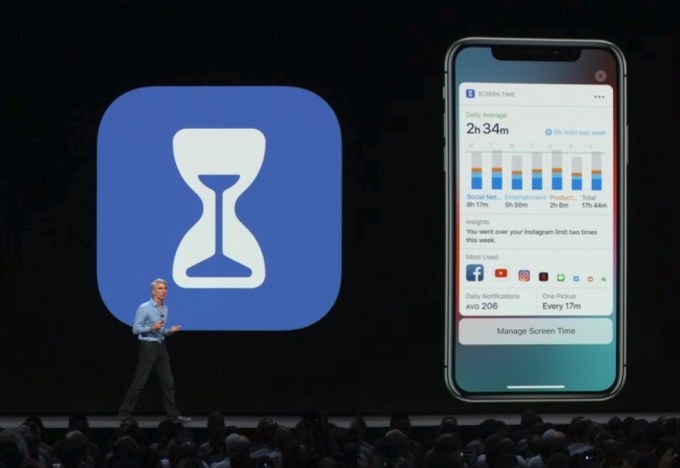
Or, in building out the iOS App Store, Apple could have implemented a “news feed” of sorts — a dedicated channel wherein users could opt to check in on all the latest news from their installed apps.
Or perhaps Apple could have structured a notification platform that would have allowed users to pick between different classes of notifications. Urgent messages — like alerts about a security breach — could have been a top-level tier; while general information could have been sent as a different type of notification. Users could have selected which types of alerts they wanted, depending on how important the app was to them.
 These are just a few of many possible iterations. A company like Apple could have easily come up with even more ideas.
These are just a few of many possible iterations. A company like Apple could have easily come up with even more ideas.
But the fact of the matter is that Apple’s notification platform was built with the idea of increasing engagement in mind. It’s disingenuous to say it was not.
At the very least, Apple could admit that it was a different era back then, and didn’t realize the potential damage to our collective psyche that a continually buzzing iPhone would cause. It could point out how it’s now working to fix this problem by putting users back in control, and how it plans to do more in the future.
Instead, it created a situation where users had to turn to the only defense left to them: switching off push notifications entirely. Today, when users install new apps they often say “No” to push notifications. And with Apple’s new tools to control notifications, users are now actively triaging which apps can get in touch.
In fact, that’s what Tim Cook says he did, too.
“If you guys aren’t doing this — if you have an iPhone and you’re not doing it, I would encourage you to really do this — monitor these [push notifications],” the CEO suggested to the audience.
“What it has done for me personally is I’ve gone in and gutted the number of notifications,” Cook said. “Because I asked myself: ‘Do I really need to be getting thousands of notifications a day?’ It’s not something that is adding value to my life, or is making me a better person. And so I went in and chopped that.”
Yep. Even Apple’s CEO is done with all the spam and noise from iPhone apps.
The comment, of course, was supposed to be a veiled reference to the addictive nature of some apps — social media apps in particular, and especially Facebook. Today, Apple throws barbs at Facebook any time it can, now that the company has fallen out of public favor due to its ongoing data privacy violations and constant scandals.
But a more truthful telling of the iPhone’s past would recall that Facebook’s app — and all its many notifications — was originally a big selling point for Apple’s mobile device.
When the App Store first launched in 2008, Facebook proudly sat in the top row in a featured position. It was heavily promoted to users because it was a prime example of the iPhone’s utility: here was this popular social network you could now get to right from your phone. Amazing!
The fact that Facebook — and every other app — later leveraged the iOS push notification platform to better its own business without regard to how that would impact users isn’t entirely app developers’ collective fault. The notification platform itself had left the door wide open for that sort of psychological abuse to occur, simply because of its lack of user-configured, user-friendly controls.

Above: The App Store at launch, via The NYT
A decade after the App Store launched, Apple finally started to dial back on the free-for-all on user attention.
It announced its suite of digital wellness tools at WWDC 2018, which included Screen Time (a dashboard for tracking and limiting usage); increased parental controls; and finally a way to silence the barrage of notifications, without having to dig around in iOS Settings.
Now Tim Cook wants to have us believe that Apple had never wanted to cause any of this addiction and distraction — despite having created the very platform that made it all possible in the first place, which in turn, helped sell devices.
Isn’t it telling that the exec has had to silence his own iPhone using these new tools? Isn’t that something of an admission of culpability here?
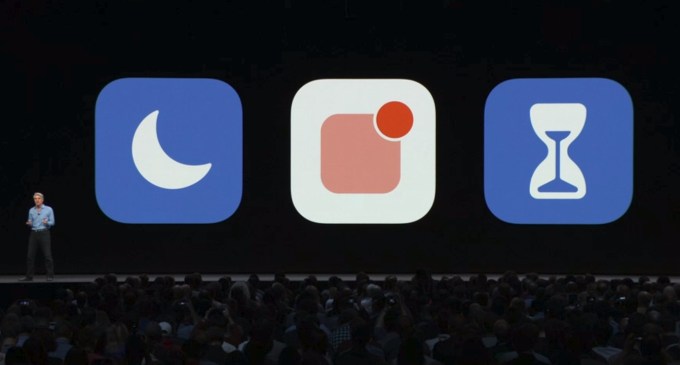
“Every time you pick up your phone, it means you’re taking your eyes off whoever you’re dealing with, are talking with, right?,” Cook continued. “And if you’re looking at your phone more than you’re looking at somebody else’s eyes, you’re doing the wrong thing,” he said. “We want to educate people on what they’re doing. This thing will improve through time, just like everything else that we do. We’ll innovate there as we do in other areas.”
“But basically, we don’t want people using their phones all the time. This has never been an objective for us,” said Cook.
Except, of course, for those 10 years when it was.
Powered by WPeMatico
Canoo, the electric vehicle startup formed from Faraday Future’s ashes, seeks $200 million
Less than a month after rebranding as Canoo, the startup electric vehicle company formerly known as Evelozcity is on the hunt for $200 million in new capital.
The startup, which is backed by a clutch of private individuals and family offices hailing from China, Germany and Taiwan, is hoping to line up the new capital from some more recognizable names as it finalizes supply deals with vendors, according to a person with knowledge of the company’s plans.
Canoo is locking in final contracts with its vendors and is going to be in production with prototypes before the end of the year. The company, which will make its vehicles available through a subscription-based model, already has 400 employees and just announced new key hires along with its rebranding.
It’s a quick ramp for a company that only two years ago was struggling to extricate itself from the morass that was Faraday Future.
Canoo began life as Evelozcity back in 2017. It was formed after Stefan Krause, a former executive at BMW and Deutsche Bank, and another former BMW executive, Ulrich Kranz, absconded from Faraday Future amid that company’s struggles.
Reportedly, Krause and Kranz left over repeated clashes with Faraday’s founding team of Jia Yueting, the main investor and shareholder, and Chaoying Deng, according to the Verge.
The situation at Evelozcity became so toxic that after the two men left, Jia accused them of “malfeasance and dereliction of duty.”
The company was launched in secret, but news of its existence came to light after Faraday Future filed a lawsuit accusing the new company of the theft of trade secrets.
Now, Canoo is rounding out its executive team and pushing forward with plans to bring prototype vehicles to market by the end of the year.
Olivier Bellin joined the company as its head of operations from STMicroelectronics, a Geneva-based semiconductor company where he served as chief financial officer of the company’s U.S. operations.
Former president of BMW manufacturing Clemens Schmitz-Justen also joined the company as its head of manufacturing — overseeing the contract manufacturing strategy, which will see the company outsource production of vehicles in the U.S. and China.
Canoo said that it intends to use a modular “skateboard” approach to its vehicle design where different form factors can rest atop its chassis. The company touts that its different cabins can be tailored to suit the needs of different customers — ranging from commuter vehicles, public or group transportation, delivery vehicles and private cars.
The company is also crafting its user interface and subscription services around its passengers and renters. To that end, Canoo has brought on James Cox, a former Uber executive in charge of product operations for the ride-hailing business’ rider application, who will be developing digital products for the company’s initial customers, according to a March statement.
Initially, Canoo will target customers in Los Angeles and the Bay Area, with additional plans to expand to San Diego and Seattle when the company brings its commercial vehicles to market in 2021.
Canoo plans to use blockchain technology to secure its subscription services and ensure an asset-light approach to development by outsourcing its manufacturing in the U.S. and China, according to one person with knowledge of the company’s plans.
With the development of that subscription model, the car company is taking a page from the playbook other automakers are beginning to toy with. Despite the fact that Cadillac cancelled its Book subscription service late last year, companies like BMW, Volvo and Porsche have all pressed on with their experiments with subscriptions.
As it rolls out its subscription service, Canoo is targeting a lower price point than its competitors for its fully electric and “autonomous-ready” vehicles.
At the end of the day the company believes that there are more than 35 cities around the world that are suitable for its offering.
And now that the lawsuits are over and Faraday Future continues to wobble, it seems that plans for Canoo are gathering steam.
The rebranding effort, and the company’s new name itself, is indicative of its goals.
“We picked Canoo because it sounds distinctive, looks cool and creates a feeling of both relaxation and movement,” said Krause, in a statement. “For thousands of years, a canoe has been a simple, sustainable transportation device used all over the world.”
Powered by WPeMatico
Digging into key takeaways from our 2019 Robotics + AI Sessions event
Extra Crunch offers members the opportunity to tune into conference calls led and moderated by the TechCrunch writers you read every day. This week, TechCrunch’s Brian Heater and Lucas Matney shared their key takeaways from our Robotics + AI Sessions event at UC Berkeley last week.
The event was filled with panels, demos and intimate discussions with key robotics and deep learning founders, executives and technologists. Brian and Lucas discuss which companies excited them most, as well as which verticals have the most exciting growth prospects in the robotics world.
“This is the second [robotics event] in a row that was done at Berkeley where people really know the events; they respect it, they trust it and we’re able to get really, I would say far and away the top names in robotics. It was honestly a room full of all-stars.
I think our Disrupt events are definitely skewed towards investors and entrepreneurs that may be fresh off getting some seed or Series A cash so they can drop some money on a big-ticket item. But here it’s cool because there are so many students. robotics founders and a lot of wide-eyed people wandering from the student union grabbing a pass and coming in. So it’s a cool different level of energy that I think we’re used to.
And I’ll say that this is the key way in which we’ve been able to recruit some of the really big people like why we keep getting Boston Dynamics back to the event, who generally are very secretive.”

Brian and Lucas dive deeper into how several of the major robotics companies and technologies have evolved over time, and also dig into the key patterns and best practices seen in successful robotics startups.
For access to the full transcription and the call audio, and for the opportunity to participate in future conference calls, become a member of Extra Crunch. Learn more and try it for free.
Powered by WPeMatico
N26 opens tech hub in Vienna with a focus on security
Fintech startup N26 is opening an office, its fourth, in Vienna. Eventually, the company plans to hire 300 software engineers, product managers and IT specialists.
N26 is building a mobile bank and has managed to attract 2.5 million users over the past few years. It raised a $300 million round back in January.
This is interesting news, as the company says that the new tech hub will focus on security, in particular detecting fraudulent activity. N26 plans to use artificial intelligence to develop a sort of real-time risk scoring system. The company will compare card transactions with your smartphone location, as well.
Multiple articles have highlighted a handful of cases of fraud in recent weeks. Customers tried to use N26 for money-laundering purposes. It took some time before N26 reacted and closed those accounts.
Every bank suffers from this kind of issue. In France, BNP Paribas, Société Générale, Crédit Agricole and Crédit Mutuel have all been fined in the past, for instance. But it’s interesting to see how N26 is reacting to those risks.
N26 has experienced tremendous growth, and the startup wants to scale its workforce appropriately so that it’s not short-staffed when faced with those issues. Similarly, it creates challenges when it comes to customer support and average response time.
It’s in the company’s best interest to follow strict rules when it comes to fraudulent activity — as a company with a banking license, N26 is regularly audited. N26 sent me the following statement a couple of weeks ago regarding audits:
N26, as all licensed banks, is subject to regular internal and external independent audits, including those by regulatory bodies such as BaFin, the German Financial Authority. Since we have a German bank license, we’re supervised by BaFin and audited on a regular basis. Any findings are promptly reviewed, implemented and monitored in coordination with the BaFin. We strive to meet all requirements consistently and take any required measures as quickly as possible.
As a bank it is imperative to continuously evaluate and improve all our structures, safety measures and service. We continuously invest in our security systems, customer support, and in hiring the right talent. To ensure we have the right talent to handle our responsibilities as a bank, we’ve increased our company size to more than 1,000 employees. The number of employees in customer service alone has tripled in the last year, and we will continue to grow across all departments to ensure regulatory compliance and serve our customers in the best way.
That’s why today’s news makes a ton of sense. There are already hundreds of people working for N26 in Berlin. Opening a new office in Vienna is a way to reach a new talent pool and make sure N26 is at least as secure as a traditional bank.
The team in Vienna will also work on shared Spaces and peer-to-peer payment improvements so you can create sub-accounts and share them with other N26 users. The startup also launched local IBANs for new users in Spain today. The company currently has offices in Berlin, Barcelona and New York.
Powered by WPeMatico
Oracle turns to innovation hubs to drive cultural and business shift to cloud
Oracle was founded in 1977. While it’s not exactly GE or IBM, which date back to the late 19th and early 20th centuries respectively, it is old enough to be experiencing a fair bit of disruption in its own right. For a good part of its existence, it sold databases to some of the biggest companies in the world. But today, as the market changes and shifts from on-prem data centers to the cloud, how does a company like Oracle make that transition?
Of course, Oracle has been making the shift to the cloud for the last several years, but it would be fair to say that it came late. Plus, it takes more than building some data centers and pushing out some products to change a company the size of Oracle. The company leadership recognizes this, and has been thinking at the highest levels of the organization about how to, from a cultural and business perspective, successfully transform into a cloud company.
To that end, Oracle has opened five innovation hubs over the last several years, with locations in Austin, Texas; Reston, Va.; Burlington, Mass.; Bangalore, India and Santa Monica, Calif. What are these centers hoping to achieve, and how will it extend to the rest of the company the lessons learned? Those are big questions Oracle must answer to make some headway in the cloud market.
Understanding the problem
Oracle seems to understand it has to do something different to change market perception and its flagging market position. Synergy Research, a firm that tracks cloud market share, reports that the company is struggling.
“For cloud infrastructure services (IaaS, PaaS, hosted private cloud services) — Oracle has a 2 percent share,” John Dinsdale, chief analyst and managing director at Synergy told TechCrunch. He added, “It is a top-10 player, but it is nowhere near the scale of the leading cloud providers; and its market share has been steadily eroding.”

The news is a bit better when it comes SaaS. “Along with SAP, Oracle is one of the leaders in the ERP segment. But enterprise SaaS is much broader than ERP and across all of enterprise SaaS it is the No. 4-ranked provider behind Microsoft, Salesforce and Adobe. Oracle worldwide market share in Q4 was 6 percent,” Dinsdale said.
The company knows that it will take a vast shift to change from an organization that mostly sold software licenses and maintenance agreements. It pushed those hard, sometimes so hard that it left IT pros with a sour taste in their mouths. Today, with the cloud, the selling landscape has changed dramatically to a partnership model. The company knows that it must change, too. The question is, how?
That will take an entirely new approach to product development, sales and marketing; and the innovation hubs have become a kind of laboratory where engineers can experiment with more focused projects, and learn to present their ideas with goal of showing instead of telling customers what they can do.
And the young shall lead
One way to change the culture is to infuse it with fresh-thinking, smart young people, and that’s what Oracle is attempting to do with these centers, where they are hiring youthful engineers, many right out of college, to lead the change with the help of more seasoned Oracle executives.
They are looking for ways to rethink Oracle’s cloud products, to pull the services together into packages of useful tools that helped solve specific business problems, from prescription opioid abuse to predicting avocado yields. The idea isn’t just to have some section of the company where people work on dream projects. They want them to relate to real business problems that results, eventually, in actual sales and measurable results.
Hamza Jahangir, group vice president for the cloud solution hubs at Oracle, says they look for people who want to dig into new solutions, but they want a practical streak in their innovation hub hires. “We don’t want just tinkerers. If the only problem you’re solving is that of your own boredom, that’s not the type of person we are looking for,” he said.
Executive buy-in
The idea of the innovation center actually began with CEO Mark Hurd, according to Jahangir. He had been working for several years to change the nature of the sales force, the one that had a reputation of strong-arming IT pros, with a new generation, by hiring people right out of college with a fresh approach.
Hurd didn’t want to stop with sales, though. He began looking at taking that same idea of hiring younger employees to drive that cultural shift in engineering, too. “About two years ago, Mark challenged us to think about how can we change the customer-facing tech workforce as the business model was moving to the cloud,” Jahangir said.
Hurd gave him some budget to open the first two centers in Austin and Reston and he began experimenting, trying to find the right kinds of employees and projects to work on. The funding came without of a lot of strings or conditions associated with it. Hurd wanted to see what could happen if they unleashed a new generation of workers and gave them a certain amount of freedom to work differently than the traditional way of working at Oracle.
Changing expectations
Jahangir was very frank when it came to assessing customer’s expectations around Oracle moving to the cloud. There has been a lot of skepticism, and part of the reason for the innovation centers was to find practical solutions that could show customers that they actually had modern approaches to computing, given a chance.
The general customer stance has been, “We don’t believe you have anything real, and we need to see true value realized by us before we pay you any money,” he said. That took a fundamental shift to focusing on actual solutions. It started with the premise that the customers shouldn’t believe any of the marketing stuff. Instead, it would show them.
“Don’t bother watching a PowerPoint presentation. Ask us to show you real solutions and use cases where we have solved real material problems — and then we can have a discussion.”
Even chairman and company founder Larry Ellison recognizes the relationship and selling model needed to change as the company moves to the cloud. Jahangir relayed something he said in a recent internal meeting, “In the cloud we are now no longer selling giant monolithic software. Instead we are selling small bites of the apple. The relationship between the vendor and the buyer is becoming more like a consumer model.” That in turn requires a new way of selling and delivering solutions, precisely what they are trying to figure out at the innovation hubs.
Putting the idea to work
Once you have a new way of thinking, you have to put it to work, and as the company has created these various hubs, that has been the approach. As an example, one that isn’t necessarily original, but that puts Oracle features together in a practical way, is the connected patient. The patient wears a Fitbit-like monitor and uses a smart blood pressure cuff and a smart pill box.
The patient can then monitor his or her own health with these tools in a consolidated mobile application that pulls this data together for them using the Internet of Things cloud service, Oracle Mobile Cloud and Oracle Integration Cloud. What’s more, that information gets shared with the patient’s pharmacy and doctor, who can monitor the patient’s health and get warnings when there is a serious issue, such as dangerously high blood pressure.
Another project involved a partnership with Waypoint Robotics, where they demonstrated a robot that worked alongside human workers. The humans interacted with the robots, but the robot moved the goods from workstation to workstation, acting as a quality control agent along the way. If it found defects or problems, it communicated that to the worker via a screen on the side of the unit, and to the cloud. Every interaction between the humans, goods and robot was updated in the Oracle cloud.
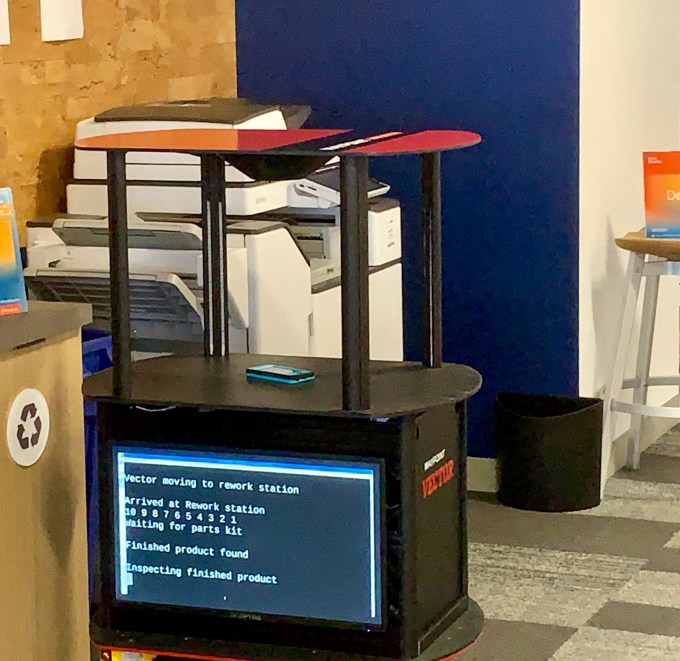
Waypoint Robotics robot inspecting iPhones. Information on the display shows it communicating with the Oracle cloud. Photo: Ron Miller
One other project worked with farmers and distributors to help stores stay stocked with avocados, surely as good a Gen Z project as you are likely to find. The tool looks at weather data, historical sales and information coming from sensors at the farm, and it combines all of that data to make predictions about avocado yields, making use of Oracle Autonomous Data Warehouse, Oracle Analytics Cloud and other services from the Oracle cloud stack.
Moving beyond the hubs
This type of innovation hub has become popular in recent years as a way to help stave off disruption, and Oracle’s approach is actually in line with this trend. While companies sometimes isolate these innovation hubs to protect them from negativity and naysayers in an organization, leaving them isolated often prevents the lessons learned from being applied to the broader organization at large, essentially defeating the very purpose of creating them in the first place.
Jahangir says that they are attempting to avoid that problem by meeting with others in the company and sharing their learnings and the kinds of metrics that they use in the innovation center to measure success, which might be different from the rest of the company.
He says to put Oracle on the customer agenda, they have to move the conversation from religious battles, as he calls how people support or condemn tech from certain companies. “We have to overcome religious battles and perceptions. I don’t like to fight religion with more religion. We need to step out of that conversation. The best way we have seen for engaging developer community is to show them how to build really cool things, then we can hire developers to do that, and showcase that to the community to show that it’s not just lip service.”
The trick will be doing that, and perhaps the innovation centers will help. As of today, the company is not sharing its cloud revenue, so it’s hard to measure just how well this is helping contribute to the overall success of the company. But Oracle clearly has a lot of work to do to change the perception of the enterprise buyer about its cloud products and services, and to increase its share of the growing cloud pie. It hopes these innovations hubs will lead the way to doing that.
Jahangir recognizes that he has to constantly keep adjusting the approach. “The hub model is still maturing. We are finding and solving new problems where we need new tooling and engagement models in the organization. We are still learning and evolving,” he said.
Powered by WPeMatico
Led by LA-based March Capital, Astound raises $15.5 million for employee help desk automation services
Astound, a company selling automated employee help desk services, has raised a new round of $15.5 million from investors led by the Los Angeles investment firm March Capital Partners.
Previous investors Vertex Ventures, Pelion Venture Partners, Moment Ventures and the Slack Fund also participated in the funding, which brings Astound’s total capital raised to $27 million.
The company’s software integrates with ServiceNow, BMC, Jira, Cherwell and Workday, among others.
For co-founder and chief product officer Dan Turchin, the company is the culmination of decades of work spent developing tools for human resources and employee services. It’s the seventh company that Turchin has been involved in around applying technology to help employees, he says. Most recently, Turchin worked at ServiceNow, which he left in 2014 to launch Astound .
Astound said it would use the financing to increase its product development and sales and marketing efforts, according to a statement.
Taking information from structured and unstructured data sources across different information silos within a business and offering it up to employees via automated messages (it’s a chatbot) frees human resources and help desk staff to engage at a higher level with employees, companies like Astound say.
Automation is certainly coming to businesses, whether employees like it or not. A study from McKinsey indicates that 70 percent of companies will bring in at least one automation technology by 2030. And those technologies could contribute up to $120 billion in increased economic value, according to the McKinsey study cited by Astound.
Powered by WPeMatico
India’s Mfine raises $17.2M for its digital healthcare service
Mfine, an India-based startup aiming to broaden access to doctors and healthcare by using the internet, has pulled in a $17.2 million Series B funding round for growth.
The company is led by four co-founders from Myntra, the fashion commerce startup acquired by Flipkart in 2014. They include CEO Prasad Kompalli and Ashutosh Lawania who started the business in 2017 and were later joined by Ajit Narayanan and Arjun Choudhary, Myntra’s former CTO and head of growth, respectively.
The round is led by Japan’s SBI Investment with participation from sibling fund SBI Ven Capital and another Japanese investor, Beenext. Existing Mfine backers Stellaris Venture Partners and Prime Venture Partners also returned to follow-on. Mfine has now raised nearly $23 million to date.
“In India, at a macro-level, good doctors are far and few and distributed very unevenly,” Kompalli said in an interview with TechCrunch. “We asked ‘Can we build a platform that is a very large hospital on the cloud?,’ that’s the fundamental premise.”
There’s already plenty of money in Indian healthtech platforms — Practo, for one, has raised more than $180 million from investors like Tencent — but Mfine differentiates itself with a focus on partnerships with hospitals and clinics, while others have offered more daily health communities that include remote sessions with doctors and healthcare professionals who are recruited independently of their day job.
“We are entering a different phase of what is called healthtech… the problems that are going to be solved will be much deeper in nature,” Kompalli said in an interview with TechCrunch.
Mfine makes its money as a digital extension of its healthcare partners, essentially. That means it takes a cut of spending from consumers. The company claims to work with more than 500 doctors from 100 “top” hospitals, while there’s a big focus on tech. In particular, it says that an AI-powered “virtual doctor” can help in areas that include summarising diagnostic reports, narrowing down symptoms, providing care advice and helping with preventative care. There are also other services, including medicine delivery from partner pharmacies.
To date, Mfine said that its platform has helped with more than 100,000 consultations across 800 towns in India during the last 15 months. It claims it is seeing around 20,000 consultations per month. Beyond helping increase the utilization of GPs — Mfine claims it can boost their productivity 3 to 4X — the service can also help hospitals and centers increase their revenue, a precious commodity for many.
Going forward, Kompalli said the company is increasing its efforts with corporate companies, where it can help cover employee healthcare needs, and developing its insurance-style subscription service. Over the coming few years, that channel should account for around half of all revenue, he added.
A more immediate goal is to expand its offline work beyond Hyderabad and Bangalore, the two cities where it currently operates.
“This round is a real endorsement from global investors that the model is working,” he added.
Powered by WPeMatico
Voiceflow, which allows anyone to make voice apps without coding, raises $3.5 million
The market for voice apps has opened up — Amazon Alexa’s platform alone has more than 80,000 skills as of earlier this year — and there’s little sign of that growth slowing now that smart speakers have hit critical mass in the U.S. To capitalize on this trend, Voiceflow, a startup making it easier for product teams to build voice applications for Alexa and Google Assistant, has raised $3 million in seed funding.
The round was led by True Ventures, and includes participation from Product Hunt founder Ryan Hoover, Eventbrite founder Kevin Hartz and InVision founder Clark Valberg. The company has previously raised $500,000 in pre-seed funding.
Explains Voiceflow CEO and co-founder Braden Ream, the idea for a collaborative platform for building voice apps came from direct experience as a voice app developer.
The team — which also includes Tyler Han, Michael Hood and Andrew Lawrence — had decided to build a voice application offering interactive children’s stories for Alexa, called Storyflow.
But as the team began to build out its library of these choose-your-own-adventure stories, they realized the process wasn’t scaling fast enough to serve their user base — they simply couldn’t build the storyboards with all their branches fast enough.
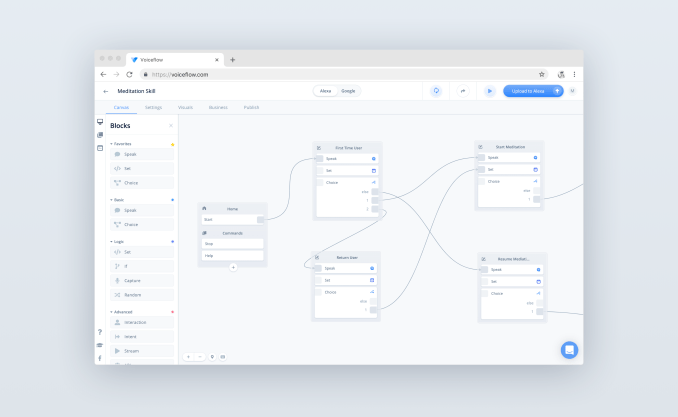
“At some point, we had the idea to just do a drag-and-drop,” says Ream. “I wished I could build the flow chart, the scripting and the actual coding — I wished this was all one step. That led us to build a really early iteration of what is now Voiceflow. It was sort of an internal tool,” he continues. “And being the nerds that we are, we kept making the platform better by adding logic, variables and modularity.”
The original plan was to make Storyflow’s platform a “YouTube of voice” so anyone could build their stories easily.
But when the Storyflow community got ahold of what the team had built, they very quickly wanted to use it to build their own voice apps — not just interactive stories.
“That’s when the light bulb went off for us,” notes Ream. “This could easily be the central platform for building voice apps, and not necessarily interactive children’s stories. The pivot was very easy,” he says. “All we had to do was change our name from Storyflow to Voiceflow.”
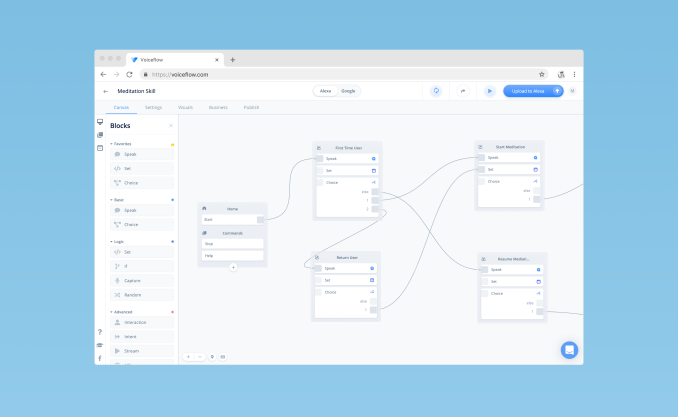
The platform officially launched in November, and today has more than 7,500 customers who have published some 250 voice apps using its tools.
Voiceflow is designed to be non-technical for those who don’t know how to code. For example, its two basic block types are “speak” and “choice.” Its blocks are organized on the screen through drag-and-drop, as users design the flow of their app. For more technical users, an advanced section allows you to add logic and variables — but it’s still entirely visual.
For enterprise customers, there’s also an API block in Voiceflow that allows the customer to integrate the business’s own API into their voice app.
What’s also interesting about the product is its collaborative features. While Voiceflow is free for individuals, its business model is focused on allowing teams to work together to build voice apps. Priced at $29 per month in its paid workspaces, voice agencies that have a larger staff — including linguists, voice user interface designers and developers, for example — can all work together on one board, share projects and hand off assets more easily.
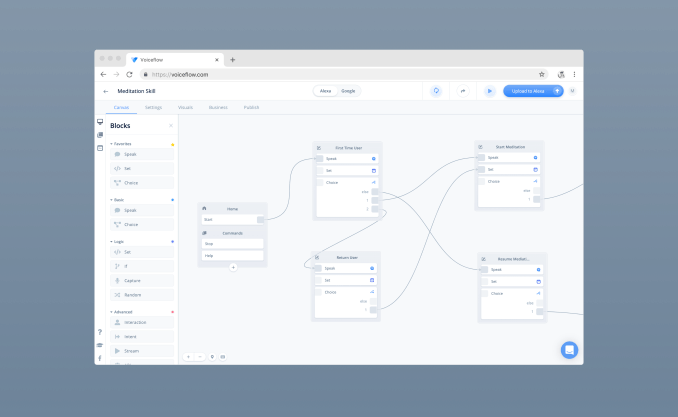
With the seed funding, Voiceflow plans to grow the team by hiring more engineers and continue to develop the platform.
Longer-term, the company wants to help people design better, more human-sounding voice apps through its platform.
“The problem right now is you have documentation and best practices by Google. Then you have the exact same on the Alexa side, but there’s no coherent industry standard. And there’s certainly no tangible base of examples, or easy way to put these into practice,” Ream explains. “If we can help spawn another 10,000 voice user interface designers — we can help train them and give them a platform that’s accessible, where they can collaborate with each other — I think you’re going to see a tremendous uplift in the quality of conversations.”
On this front, Voiceflow has started a program called Voiceflow University, which today includes video tutorials but will later become a more standardized training course.
In addition to the videos, Voiceflow networks with its community directly on Facebook, where more than 2,500 developers, linguists, educators, designers and entrepreneurs actively discuss the voice app design and development process.
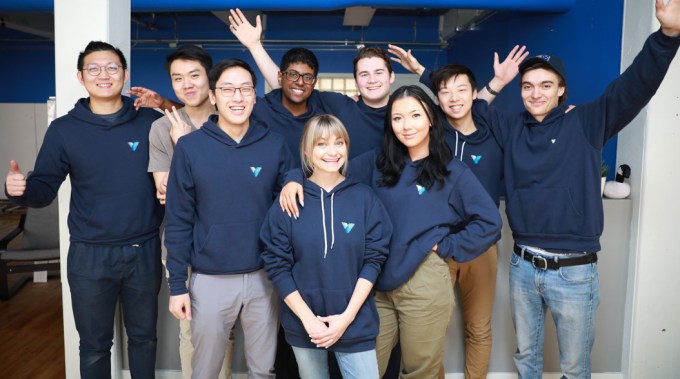
This interaction between Voiceflow and its user base was one of the key selling points for True Ventures’ Tony Conrad.
“After I left the [pitch] meeting and I started digging around a little bit, the thing that blew me away was the engagement of the community of developers. That’s unlike anybody else. The single biggest differentiator of this platform is actually Braden and the team’s engagement with the community,” Conrad says. “It reminds me of early WordPress.”
Voiceflow also recently worked with another visual design tool, Invocable, which has shut down, to allow its users to transition to Voiceflow’s platform.
There is, perhaps, a cautionary tale in there — Invocable, in its farewell blog post, points out that people continue to use smart speakers mainly for things like music, news, reminders and simple commands. It also says that Natural Language Processing and Natural Language Understanding haven’t developed to the point where they can support higher-quality voice apps. That day will likely come to pass, but there’s a bit of a timing issue when it comes to betting on the right platform to support the voice app development market in the meantime, ahead of widespread consumer adoption.
Toronto-based Voiceflow is a team of 12 today and looking to grow.
Powered by WPeMatico
